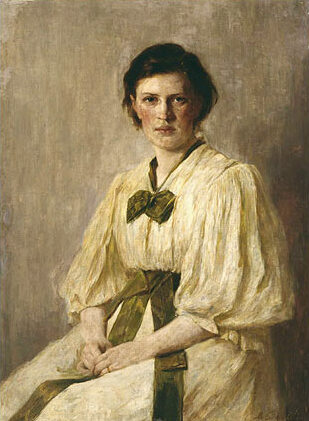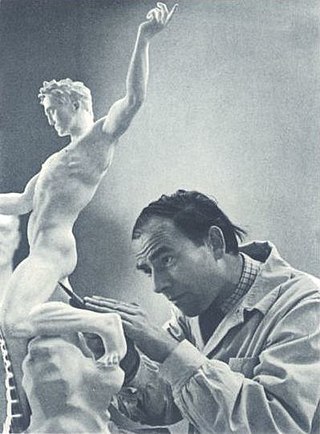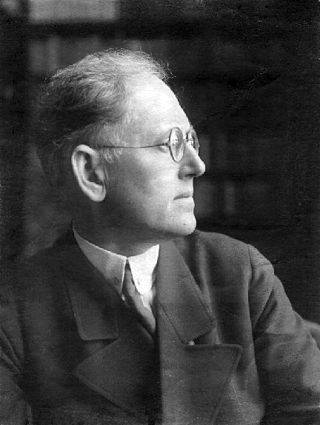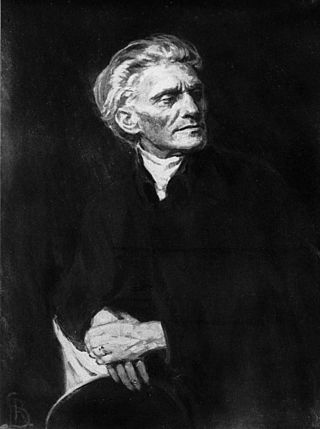Related Research Articles
Georg Simmel was a German sociologist, philosopher, and critic.

Degenerate art was a term adopted in the 1920s by the Nazi Party in Germany to describe modern art. During the dictatorship of Adolf Hitler, German modernist art, including many works of internationally renowned artists, was removed from state-owned museums and banned in Nazi Germany on the grounds that such art was an "insult to German feeling", un-German, Freemasonic, Jewish, or Communist in nature. Those identified as degenerate artists were subjected to sanctions that included being dismissed from teaching positions, being forbidden to exhibit or to sell their art, and in some cases being forbidden to produce art.

Karl Otfried Müller was a German professor, scholar of classical Greek studies and philodorian.

Stefan Anton George was a German symbolist poet and a translator of Dante Alighieri, William Shakespeare, Hesiod, and Charles Baudelaire. He is also known for his role as leader of the highly influential literary circle called the George-Kreis and for founding the literary magazine Blätter für die Kunst. From the inception of his circle, George and his followers represented a literary and cultural revolt against the literary realism trend in German literature during the last decades of the German Empire.

Marianne Weber was a German sociologist, women's rights activist and the wife of Max Weber.

Arno Breker was a German architect and sculptor who is best known for his public works in Nazi Germany, where they were endorsed by the authorities as the antithesis of degenerate art. He was made official state sculptor, and exempted from military service. One of his better known statues is Die Partei, representing the spirit of the Nazi Party that flanked one side of the carriage entrance to Albert Speer's new Reich Chancellery.

Paul Schultze-Naumburg was a German traditionalist architect, painter, publicist and author. A leading critic of modern architecture, he joined the Nazi Party in 1930 and became an important advocate of Nazi architecture.

The Frankfurt Art Association is an art museum founded in 1829 by a group of influential citizens of the city of Frankfurt, Germany. The aim of the institution is to support the arts in the city, which was an important center of trade and business. Works of art were bought and exhibitions organized in order to open access to art and culture for the public.
Arnold Hauser was a Hungarian-German art historian and sociologist who was perhaps the leading Marxist in the field. He wrote on the influence of change in social structures on art.
Heinrich Lützeler was a German philosopher, art historian, and literary scholar. He presided over a number of institutes and was dean at the department of philosophy at the University of Bonn.

Rudolf Pannwitz was a German writer, poet and philosopher. His thought combined nature philosophy, Nietzsche, an opposition to nihilism and pan-European internationalism:
Pannwitz's elusive, difficult goal may be seen as the complete re-evaluation of man, art, science and culture envisaged as the expression of an evolving cosmos obeying the laws of eternal recurrence, with Nietzsche-Zarathustra as the supreme prophet.

The Militant League for German Culture, was a nationalistic anti-Semitic political society during the Weimar Republic and the Nazi era. It was founded in 1928 as the Nationalsozialistische Gesellschaft für deutsche Kultur by Nazi ideologue Alfred Rosenberg and remained under his leadership until it was reorganized and renamed to the National Socialist Culture Community in 1934.

The George-Kreis was an influential German literary group centred on the charismatic author Stefan George. Formed in the late 19th century, when George published a new literary magazine called Blätter für die Kunst, the group featured many highly regarded writers and academics. In addition to sharing cultural interests, the circle reflected mystical and political themes within the sphere of the Conservative Revolutionary movement. The group disbanded when George died in December 1933.
Arthur Salz was a German professor of sociology and economics who wrote on mercantilism, imperialism, and power. He taught at the University of Heidelberg before being forced to flee Germany because of his Jewish faith. He was familiar with the Stefan George circle and married Sophie Kantorowiz, the sister of historian Ernst Kantorowicz.
Margarete Susman was a German-Jewish poet, writer, and critic who lived much of her life in Switzerland. The author of hundreds of essays, five collections of poetry, and notable literary-critical works, she distinguished herself as a philosophical writer addressing vital questions in literature, politics, culture and religion. Her 1946 work Das Buch Hiob und das Schicksal des jüdischen Volkes (1946), a reflection on Jewish history through the lens of the Biblical book of Job, was one of the earliest postwar Jewish theological responses to the Holocaust.
Gertrud Schiller was a German art historian, nurse, social pedagogue and Lutheran teacher of religion. Despite not having a doctorate in art history, she wrote what remains a standard work on Christian iconography. Schiller received an honorary doctorate from the Kirchliche Hochschule Berlin in 1979.
Renata Johanna von Scheliha was a German classical philologist. She authored a number of books, treatises and monographs and carried out several translations.

Marie von Bunsen was a British-born German writer, watercolour painter and literary salon host.
Gertrud Otto was a German art historian who researched sculpture of the 15th and 16th centuries, in particular the late Gothic Memmingen and Ulm schools.
Ernst August Bertram was a German professor of German studies at the University of Cologne, but also a poet and writer who was close to the George-Kreis and the lyricist Stefan George.
References
- 1 2 Guide to the Gertrud Kantorowicz letters and poems
- ↑ Weber, Marianne (1988). Max Weber: A Biography. Translated by Harry Zohn. Transaction Publishers. p. 41. ISBN 978-1-4128-2825-3.
- ↑ Swedberg, Richard; Reich, Wendelin (2010). "Georg Simmel's Aphorisms". Theory, Culture & Society. 27 (1): 26. doi:10.1177/0263276409350362. S2CID 146370425.
- 1 2 Lerner, Robert E. (2011). "The Secret Germany of Gertrud Kantorowicz". In Melissa Lane; Martin Ruehl (eds.). A Poet's Reich: Politics and Culture in the George Circle. Camden House. pp. 56–77. ISBN 978-1-57113-462-2.